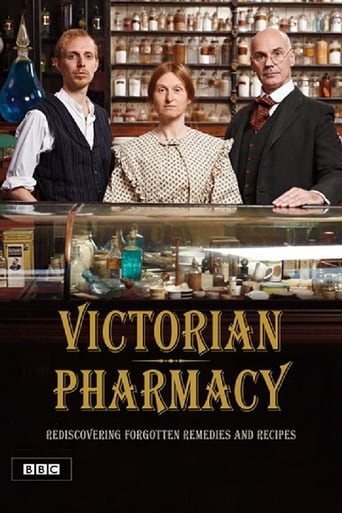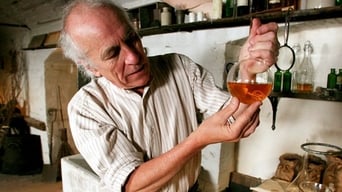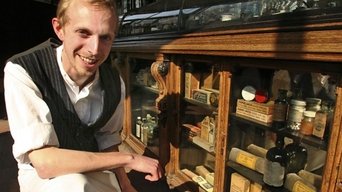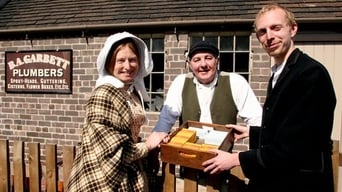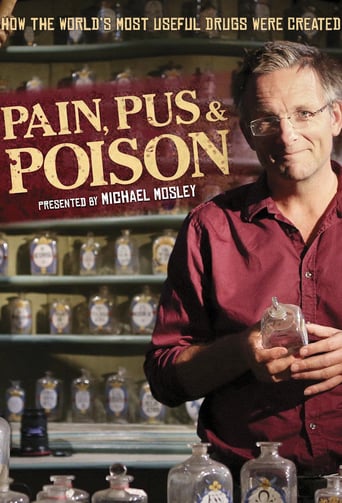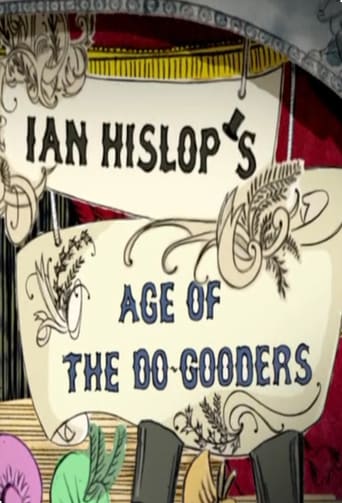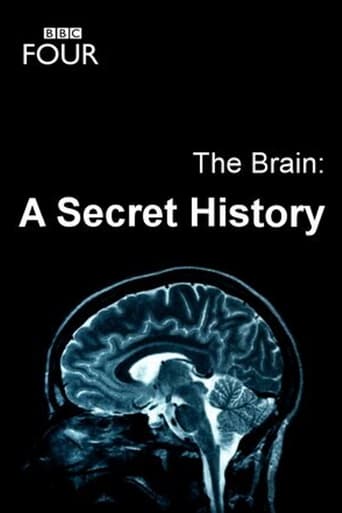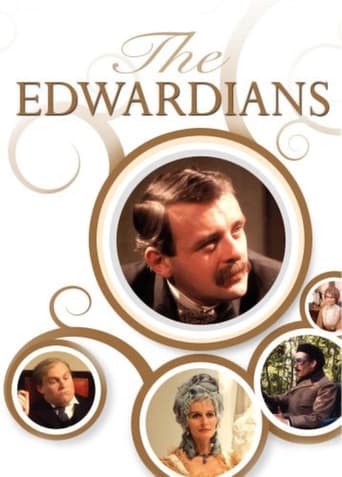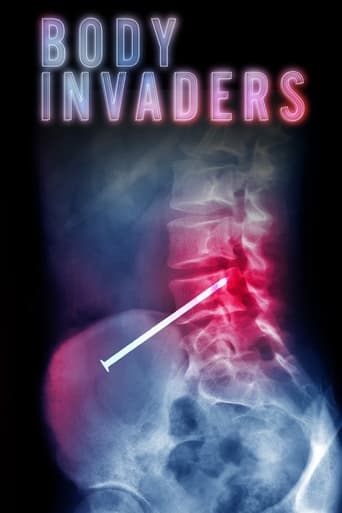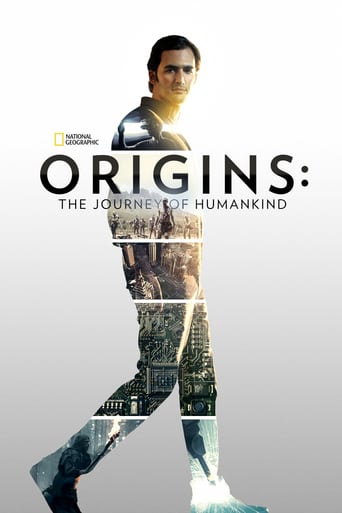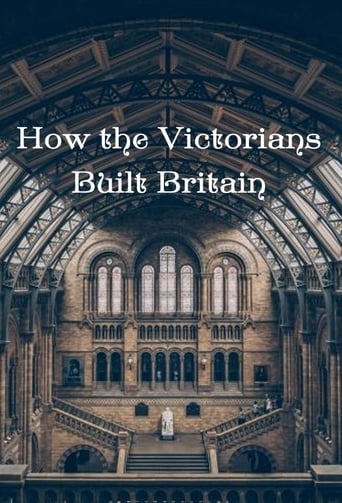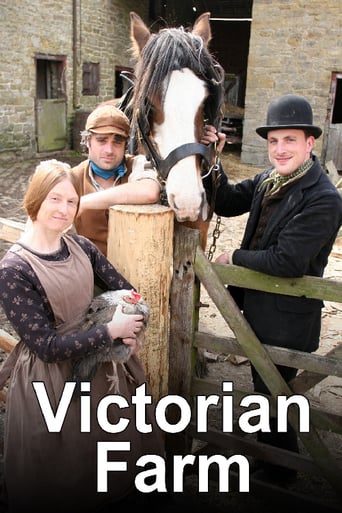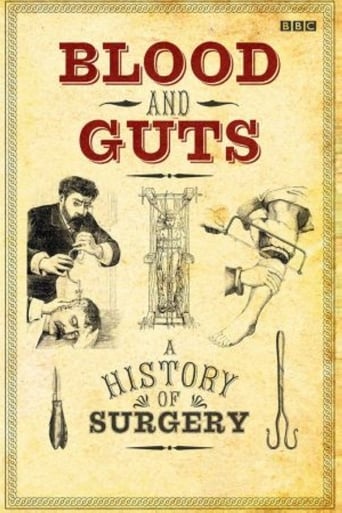Victorian Pharmacy Season 1
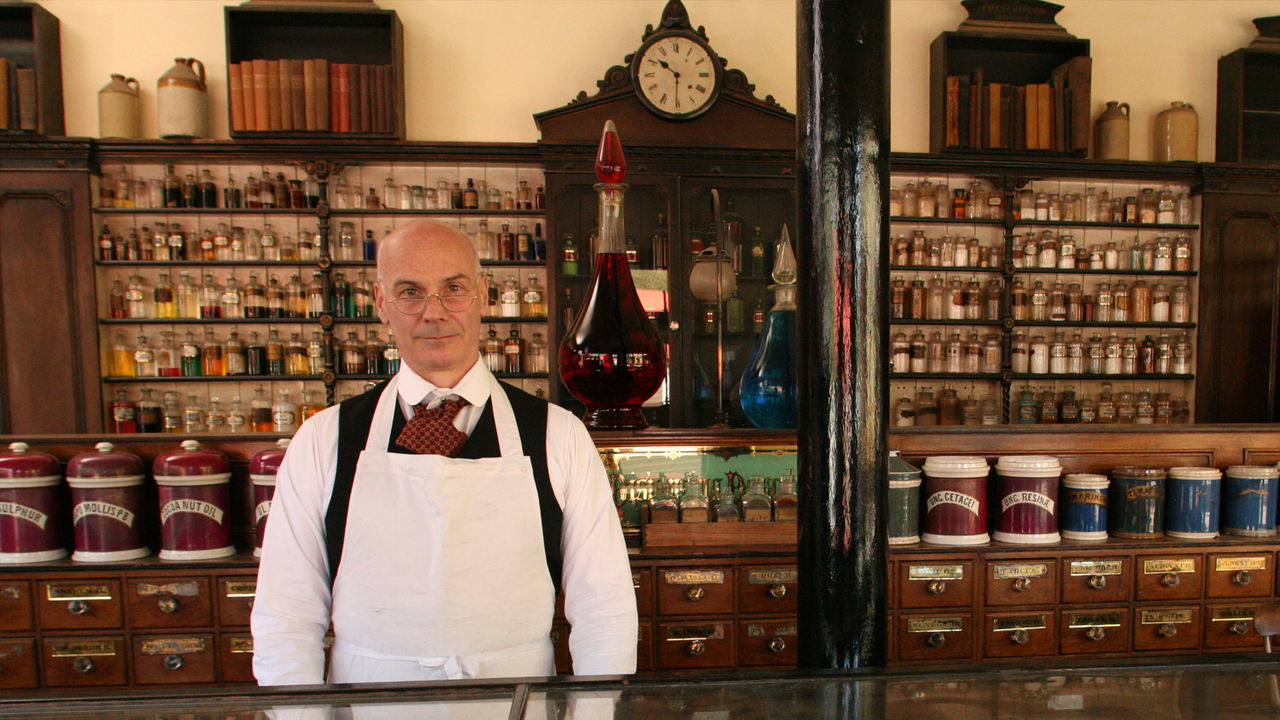
Victorian Pharmacy is a historical documentary TV series in four parts, first shown on BBC Two in July 2010. It was made for the BBC by independent production company Lion Television. It was filmed at Blists Hill Victorian Town in Shropshire. It is a historical documentary that looks at life in the 19th Century and how people attempted to cure common ailments. Since some of the ingredients of Victorian remedies are now either illegal or known to be dangerous, Nick Barber often uses his modern pharmaceutical knowledge to produce similar products without those ingredients. The other main presenters are Tom Quick, a PhD student, and Ruth Goodman, a domestic historian who also appeared in Tales from the Green Valley, Victorian Farm and Edwardian Farm.
Watch NowWith 30 Day Free Trial!
Victorian Pharmacy
2010
Historical observational documentary series which recreates a Victorian pharmacy.
Watch Trailer
With 30 Day Free Trial!
Victorian Pharmacy Season 1 Full Episode Guide
The team continue with the pharmacy through to the end of the Victorian era. The last programme in the series sees Ruth, Tom and Nick continue with Barber and Goodman's Pharmacy through to the end of the Victorian era. Tom branches out into photography and dentistry using the latest technology, such as the foot-pedal dental drill. Ruth makes condoms out of sheep's intestines. Nick learns how to make the Victorian version of aspirin - producing a cure for warts and corns along the way. And for those customers who like a little pampering, the team turn their hands to making their very own brand of perfume. As they shut up shop for the last time, the team reflect on a revolution in public healthcare that put a chemist's shop in every town in the country.
The pharmacy enters a period of new inventions and new laws, beginning in 1868. The pharmacy enters a period of new inventions and new laws. In 1868 pharmacies were regulated by law for the very first time - and Ruth, Tom and Nick face a taste of the tough examinations pharmacists went through to become qualified. They also explore the world of poisons and hazards that were completely unregulated until this time - from arsenic and opium to explosives. But the lack of restrictions they had enjoyed enabled 'experimental chemists' to invent products ranging from matches to fireworks, to custard and jelly. The team learn the processes involved in each, and lay on a Victorian style firework display for their customers.
The team find out how the discovery of germs made disinfectants a bestseller. The team take on the challenges of the 1850s and 60s, a time when overcrowded and unsanitary living conditions had reached their peak, leading to unprecedented outbreaks of disease. 'Cure all' medicines that had promised to cure virtually everything were all the rage and the team make their own out of rhubarb, liquorice, soap and syrup. They also venture into the uncertain world of electrotherapy and find out how the discovery of germs made disinfectants a bestseller; but to make their own they need to extract carbolic acid from coal tar. Plus Tom attempts to emulate an ambitious Victorian publicity stunt by building his very own dog-powered mortar and pestle. But will it work?
A look at the world of the pharmacy at the beginning of Queen Victoria's reign in 1837. In a unique experiment, historian Ruth Goodman, Professor Nick Barber and PhD student Tom Quick recreate an authentic 19th-century pharmacy. The team discovers the world of the pharmacy at the beginning of Queen Victoria's reign in 1837; a world where traditional remedies, such as leeches, oil of earthworm and potions laced with cannabis and opium, held sway. After sampling some of the old ways, the team ventures into new discoveries, such as the Malvern water cure, the bronchial kettle for curing coughs, and the invention of Indian tonic water.
Free Trial Channels
Seasons


